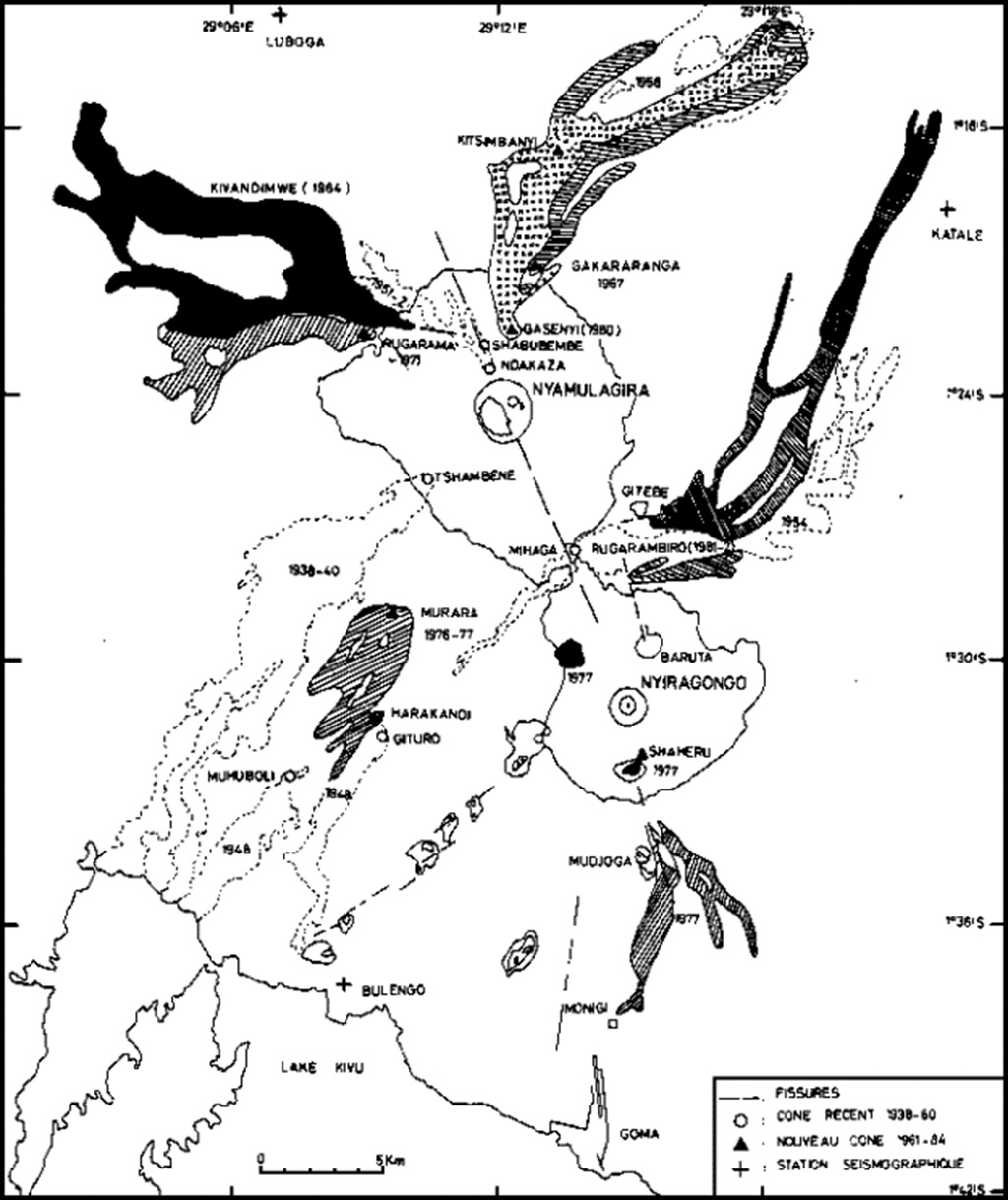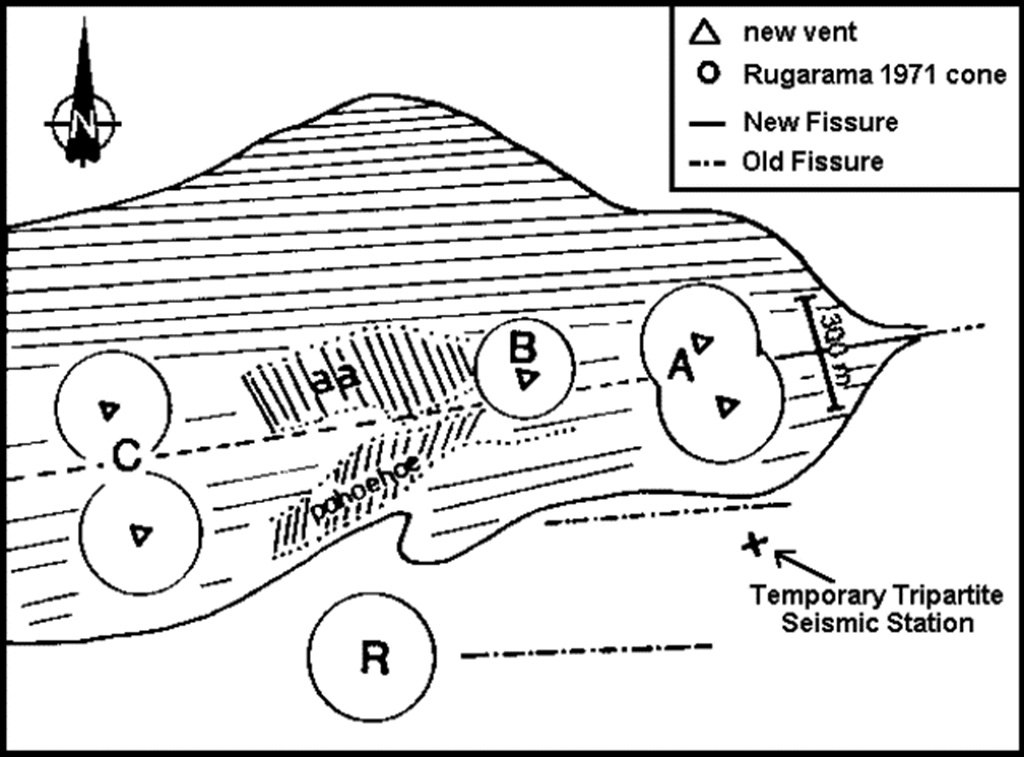Report on Nyamulagira (DR Congo) — March 1984
Scientific Event Alert Network Bulletin, vol. 9, no. 3 (March 1984)
Managing Editor: Lindsay McClelland.
Nyamulagira (DR Congo) Large lava flows and tephra ejection from flank fissure
Please cite this report as:
Global Volcanism Program, 1984. Report on Nyamulagira (DR Congo) (McClelland, L., ed.). Scientific Event Alert Network Bulletin, 9:3. Smithsonian Institution. https://doi.org/10.5479/si.GVP.SEAN198403-223020
Nyamulagira
DR Congo
1.408°S, 29.2°E; summit elev. 3058 m
All times are local (unless otherwise noted)
The NW-flank fissure eruption ended during the evening of 14 March. Lava flows covered a large area and a substantial quantity of tephra was deposited near the vents.
An A-type volcanic earthquake at 0323 on 23 February was followed by volcanic tremor. A fissure trending N100°E began opening gradually from E to W at 1013. Lava issued from the entire fissure during the first day of the eruption, but activity soon concentrated at two vents ~400 m from the E end of the fissure and two others ~1.5 km to the W (A and C on figure 4). About a week later, a new vent (B), ~500 m W of the E vents, began to emit lava, but at a lower rate than the other vents.
Lava extrusion was accompanied by explosions that could be heard 25-30 km away, along the W margin of the rift valley. About 2 m of scoria and many spindle bombs were deposited within 600-800 m S of the E vents. A bomb weighing ~12 kg was found 600 m away. N. Zana judged the volume of ejecta to be much more than in the 1976, 1980, or 1982 eruptions.
When Zana visited the eruption site 8-11 March, activity had ended at the W vents and was declining at the new vent. Both aa and pahoehoe were observed between the new vent and the W vents. Cones at the W vents stood about 80 m above the surface of the lava. At about 2300 on 10 March an aa lava flow from the E vents flooded the area of the new vent and carried away its small cone. This flow was still moving S about 0900 on 11 March. By 11 March the composite cone at the E vents had a basal diameter of 300 m and was ~250 m high, but activity was becoming intermittent.
Eruptive activity, including the explosions, ceased on the evening of 14 March. Night glow disappeared 16-17 March. Lava had flowed 20 km to the W and the lava field had an average width of 2.5 km (figure 5). The new cones have been named Kivandimwe, meaning "things running together."
 |
Figure 5. Map of the Nyamuragira-Nyiragongo area showing recent vents and lava flows. The 1984 lava flow is shaded solid black. Courtesy of N. Zana. |
Geological Summary. Africa's most active volcano, Nyamulagira (also known as Nyamuragira), is a massive high-potassium basaltic shield about 25 km N of Lake Kivu and 13 km NNW of the steep-sided Nyiragongo volcano. The summit is truncated by a small 2 x 2.3 km caldera that has walls up to about 100 m high. Documented eruptions have occurred within the summit caldera, as well as from the numerous flank fissures and cinder cones. A lava lake in the summit crater, active since at least 1921, drained in 1938, at the time of a major flank eruption. Recent lava flows extend down the flanks more than 30 km from the summit as far as Lake Kivu; extensive lava flows from this volcano have covered 1,500 km2 of the western branch of the East African Rift.
Information Contacts: N. Zana, IRS.


